Remember the new world of financial opportunity that opened the day you turned 18? You could apply for a credit card. You could be approved for tens (or hundreds) of thousands of dollars in student loans. You could rent your own apartment.
And since you took a personal finance course in high school, you knew how to budget for it all, right?
Oh, wait.
It turns out only 25 states — exactly half — require high school students to complete at least one semester of personal finance. And the consequences bear that out.
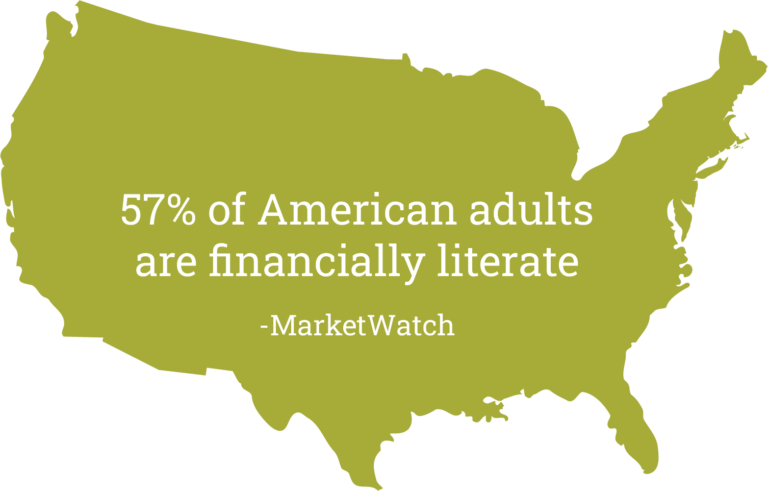
What’s more, the grades given by The Nation’s Report Card which rates each state’s financial literacy requirements, contain some surprising results.
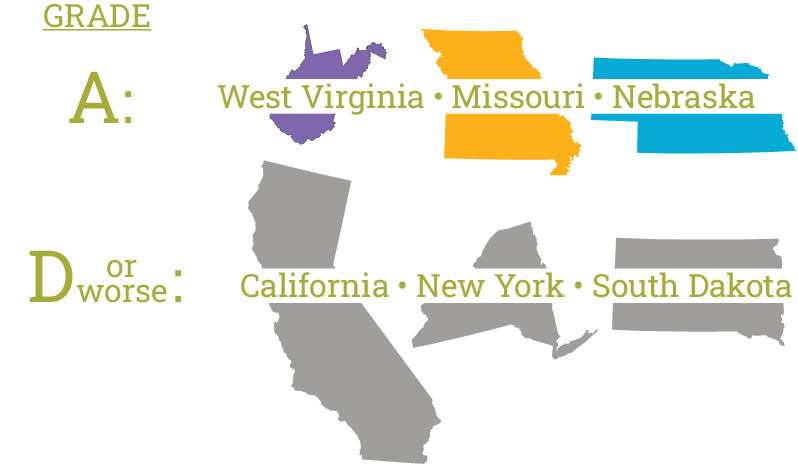
This financial illiteracy costs the average American around $1,500 per year due to poor budgeting, overspending and interest payments!
Similarly, marketing illiteracy can cost local banks and credit unions exponentially more — we’re talking millions and millions of dollars — in terms of lost customers and deposits.
But this begs the question: What kind of messaging should you use? First, we need to understand what people — especially Millennials and younger — want from their financial institutions. And then we need to identify which media to use.
Let’s dig into that.
Younger People Want Anytime Access
“Bankers’ hours” might be a good thing for people who work at financial institutions. But for the customers who want to visit a branch in-person? Not so much.
To attract new depositors, this perceived lack of convenience — and locations — presents a major concern that needs to be addressed.
In short, accessibility is paramount.
Generational Preferences in Banking
Generation Z
76%
prefer digital banking
6%
prefer in-person banking
Millennials
86%
prefer digital banking
5%
prefer in-person banking
Generation X
62%
prefer digital banking
8%
prefer in-person banking
Baby Boomers
48%
prefer digital banking
20%
prefer in-person banking
Source: Kiplinger
That data is to be expected. But what features within online banking does each generation consider must have? The results are somewhat surprising.
Generation Z *
- Faster payments/quicker transfers
- Automated savings and investment tools
Baby Boomers **
- Simple planning tools
- Quick access to accounts and financial advice
- Personal Finance Management tool (PFM)
- Debt & investment management tools
- Quick and easy way to transfer funds
- Fraud protection
Millennials *
- Faster payments/quicker transfers
In General ***
- Mobile check deposit
- Goal trackers
- Automated Savings
- Financial calculators
- Budgeting tools
- Person-to-person payments
- Integration with mobile wallet
Sources:
*Javelin Strategy **Enterprise Bank and Trust *** Lumber Digital
Oddly enough, Boomers seem to want the most features. It could be that younger generations expect that type of functionality. Regardless, if you can tout you have technology that legitimately addresses these needs, it might make sense to make this digital-first messaging the cornerstone of a campaign — especially if you’re interested in targeting Millennials or younger.
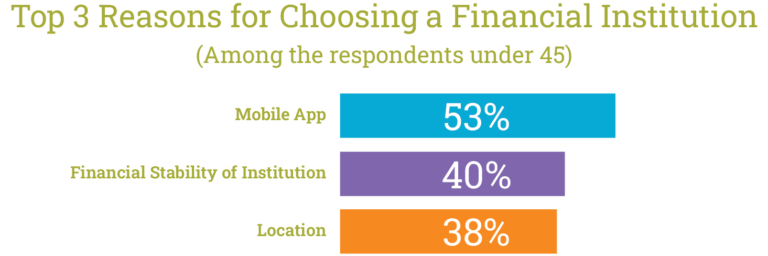
Source: Sogolytics
Younger Bankers Value… Their Values
How you spend or invest your money reflects your values to a certain extent.
Every can of soup we buy, every individual stock we invest in implies we support the company that makes the products we use. And let’s be honest: Wall Street and mega banks haven’t exactly done much to endear themselves to the average American over the past couple of decades.
In fact, positioning your financial institution as the opposite of a mega bank could mean being viewed more favorably.
Generation Z
65%
Trust in
Local/Community Banks
45%
Trust in Mega Banks
Millennials
72%
Trust in
Local/Community Banks
50%
Trust in Mega Banks
Generation X
70%
Trust in
Local/Community Banks
55%
Trust in Mega Banks
Baby Boomers
68%
Trust in
Local/Community Banks
60%
Trust in Mega Banks
Sources: FinTech Magazine American Bankers Association Extractable
That has led many to migrate to financial institutions whose values align with theirs — especially Millennials and younger.
46%
of Millennials say community involvement is an essential characteristic of the “perfect” financial institution
73%
of Millennials prefer to do business with companies that align with their values
75%
of Millennials make financial decisions based on their personal values
This means, all things being equal, would-be depositors are more likely to do business with a financial institution that tries to make life better for all.
And since community banks and credit unions are likely equal — if not better — in terms of fiscal service (e.g. online banking, checking and savings, etc.) compared to “mega” banks, leaning into community service messaging might make a difference.
Younger Depositors Value Advice
Remember how woefully inadequate our country is when it comes to financial literacy?
That affects lives in tangible ways, most obviously in the form of many not knowing how to manage their finances (at best). And mismanaging their money (at worst).
It’s no wonder, then, that younger depositors not only need advice —they want it.
Among Depositors 18-24:
Odds are your website, app and employees can provide basic financial recommendations and guidance. Promoting this service, free of charge, shifts perceptions of your branch just being a place to store money to a resource that helps members be wiser with their money.
So, Where Do Millennials and Younger Turn for Financial Advice?
According to a recent Bankrate survey, resources range from in-person to print.
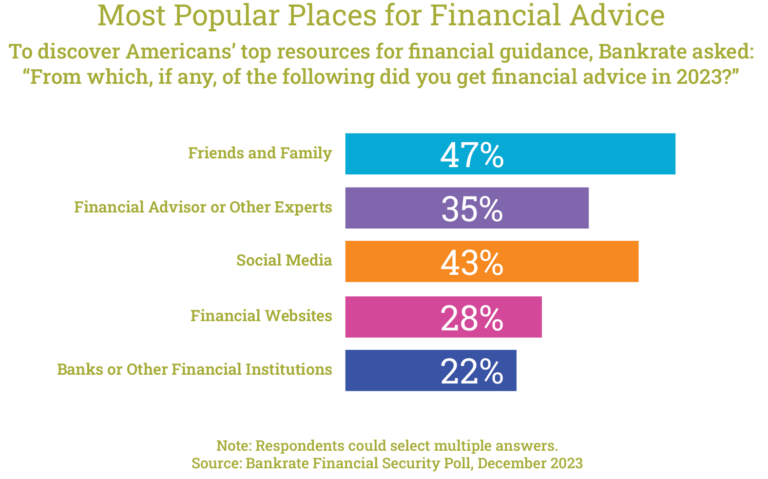
But maybe this shouldn’t come as a surprise, given how trusting (or not) different generations are of news sources.
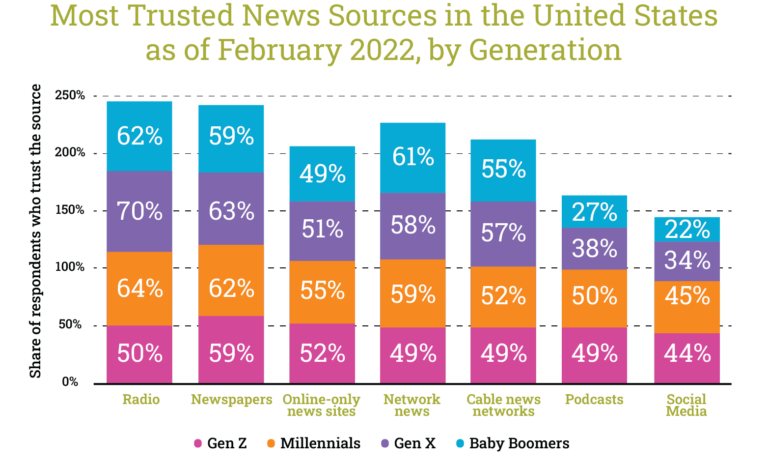
In search engine optimization, algorithms contain hundreds of ranking factors. One of those is an abbreviation: YMYL (Your Money, Your Life). In short, sites with high levels of authority and expertise are given preference for searches pertaining to life-altering content. In this case: Your Wealth and Your Health. Actually, that sounds better than Your Money, Your Life.
Anyway, you wouldn’t ask a stranger on the street for advice on treating a rash on your arm, would you? But you would be more likely take the advice of someone your trust, like a friend or family member.
Or a content creator or forum that you’ve established a trusted connection with.
Key Takeaways
Life rarely happens in a vacuum. In this case, targeting an older audience one way can provide desired ripple effects when messaging a younger audience through a different medium.
For example, creating a campaign targeting Gen Xers through their preferred media that explains the “traditional” services your institution provides could result in new customers. This generation will likely need to see the same message multiple times before visiting a website or calling a phone number listed at the end of a traditional TV commercial.
Conversely, Millennials and younger are more apt to take immediate action once they trust a financial institution, which opens the door to more direct and targeted messaging. For instance, campaigns appearing on podcasts and social media around the topics of digital convenience, the ability to open an account online, or in the case of credit unions, non-profit financial status and “belonging to” or “being a member” to elicit a certain exclusivity, can re-shape their perceptions. QR codes delivered through OTT can give them the ability to open an account anytime, anywhere.
The Ideal Media Mix
Attracting Millennials — the largest demographic — and younger should be a priority for any financial institution. But ignoring older generations could prove costly.
Creating a media strategy, with appropriate messaging per audience, is an investment worth the effort.
Reach out and let’s discuss how our media buyers and strategists can build brighter financial futures.
Not just for your customers, but for your branches.
Marketing to a new audience is like trying to find that special someone. Or, if you’ve already forged a lasting bond with a partner, marketing can be like maintaining that relationship.
Think about it.
If you’re venturing into a new location where no one knows you exist, you need to pull out all the stops (or at least more of them) if you want to make an impression. And if you’ve been in the same area for a while, you still need to put in the work if you want to keep the spark alive.
In short, you need to create — or change — your media strategy based on your market’s maturity.
So, what should your media strategy look like? Let’s find out.

Broadcasting a Grand Gesture (New Market)
The old saying “There are plenty of fish in the sea.” means you have options. Well, the same goes for your prospects. Odds are there are at least dozens of other companies who do what you do — or something similar.
In turn, you need to stand out by letting prospects know you exist in a memorable way.
So, if you’re trying to make a name for yourself in a newer market, that means high-reach media like TV or radio should be at the top of your list. Think dedicating a song on the radio, only in this case the song is a commercial made with your prospect in mind.
Casting your message where tons of prospects are likely to hear or see it ups your odds of getting multiple bites. And using newer advanced targeting features ensures you can be more precise with where you cast your net.
TV reaches 90% of US households weekly
Radio reaches 92% of US households weekly
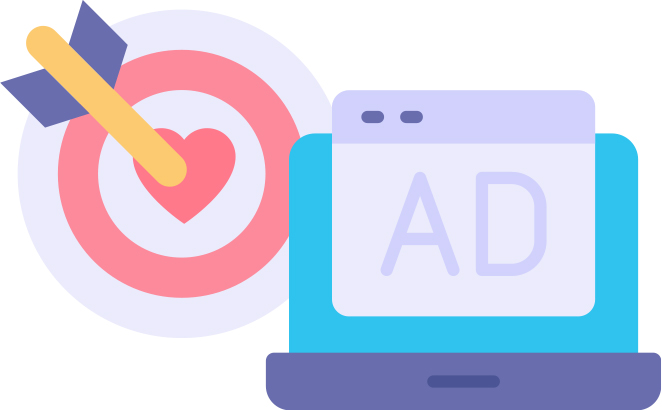
Stay Top of Mind with Digital Marketing (Established Market)
If your market is mature (in the sense you’ve been there awhile), you still need to remind prospects and existing clients alike that you’re around. Admittedly, this is a delicate dance. You want to be known and remembered — but for the right reasons.

*66% say annoying or intrusive ad experiences reduce their trust in the brand advertising
* 71% agree that annoying or intrusive ad experiences make them less likely to purchase from that brand in future.
-Source: MediaCat
The important thing is to be included in your customers’ consideration set for new or upgraded services they want. And since you’ve established your market presence, meaning you’re more familiar with its personalities and needs, you can achieve this without being overbearing.
- Paid Search
- Display
- Retargeting
- Paid Social
Brands in the initial consideration set can be up to 3X more likely to be purchased than brands that aren’t in it.
-Source: McKinsey

Keep the Spark Alive with Out of Home (New Markets)
Early in your relationship, you might be more daring and adventurous. Riding in a hot air balloon? Sure, why not? The most expensive wine on the menu? Two bottles, please.
These high-impact experiences show the lengths you’re willing to go to win someone’s affection.
From an advertising perspective in new markets, that might mean surprising clients when and where they least expect it, like at a gas station. Or devoting a can’t-miss billboard they’ll drive by on their way to work. Or sponsoring their favorite sports team.
Out Of Home Advertising generates the highest percentage of brand recall
-Solomon Partners

Send Them Mail (Established Markets)
A key to any successful relationship is reminding your partner (or client) that you care. Yes, even if it’s obvious that you do. And yes, even if you’ve been together for decades.
In these circumstances, sending a personalized gift or note in the mail just might do the trick.
And in marketing, that can include hand-written direct mail with a special offer just for them.
Handwritten direct mail has a response rate more than 2X greater than traditional mail.
-Handwrytten

Tell Them a Story In Print or On Your Website (New Markets)
Think back to your first few dates with someone. They hardly know anything about you, like your favorite color or lucky number — let alone your deepest beliefs and biggest life goals. You spend hours and hours talking about yourself while listening in kind.
If you’re the new business on the block, you don’t have the benefit of brevity working in your favor. You need to provide a lot of details, including:
- What you offer
- Why you’re better
- What you stand for
- Company achievements or awards
- Promises, guarantees, reassurances
Print marketing has a 70-80% higher recall rate than digital advertising.
-Gitnux
In short, you need to educate. You need to build trust. But that requires time and space.
In this case, print — whether in the local paper, direct mail or area publications — or infinite-scroll websites makes a world of sense.
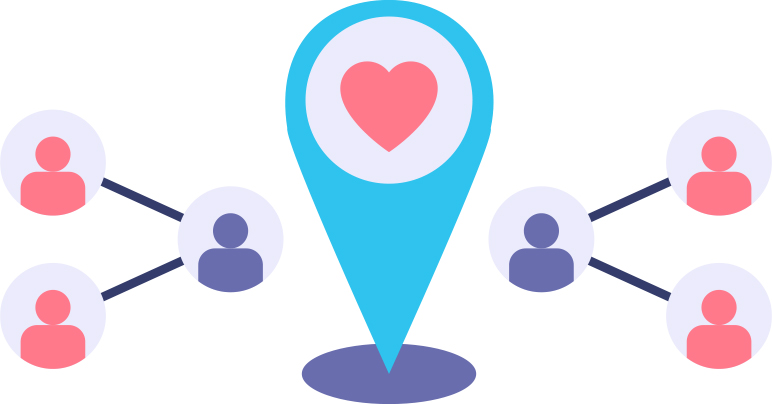
Gentle Retargeting Reminders (Established Markets)
Let’s say you and your flame of many years have a date planned months from now. Sure, you could just each enter the time and place in your separate calendars.
That’s not very romantic, though, is it?
Sending them a text with a restaurant’s menu or a recent setlist of the band you’re going to see during the months or weeks leading up to the big day builds the excitement. It reminds you both of what you’ll experience.
Retargeting serves the same purpose in established markets. It keeps the conversation going. It reminds your audience that you’re there. And, since they visited your site, you know the interest is mutual.
For example, if you’re in the financial space and want to re-engage with clients, consider retargeting them in other apps.
In-app retargeting can boost conversion rates by 38%.
-Criteo

Go Over The Top (New Markets)
Pretend you plan an extravagant day on the town for your new special someone: A picnic at their favorite park and appetizers at their favorite restaurant, followed by a pint at their favorite ice cream shop (or bar).
You’re going to their favorite locations.
Geotargeting achieves the same level of meaningfulness. And when you personalize your message at the right space at the right time, the sparks can really fly.
This can include serving a mobile ad that displays a special deal when your prospect is near one of your competitors. Or, showing an Over The Top (OTT) commercial speaking with “new customer only” messaging.
80% of Millennials and younger prefer advertisements that are customized to their individual interests and location.
-MarketSplash
Different Needs for Different Stages
We’re not dating coaches or relationship gurus. We’re just (really good) media strategists and buyers.
Every relationship, romantic and business, is different. But every relationship is the same in that effective communication helps unlock happiness. In marketing, the format, frequency and intent of your communication changes based not only on your goals, but your market maturity.
While a healthy mix of all media — digital, broadcast, social, print — is recommended regardless of your brand’s recall or geographic relevance, your recommended strategy depends on many factors, from target age to overall budget.
So, what would your ideal media strategy look like? Slide into our DMs or give us a call if you’re old fashioned.
And let’s see if we’re a good match.
Let’s say you just invented something that puts sliced bread to shame. Something that will improve lives by the million.
You have a website and a logo. You even have a few ideas for commercials.
There’s just one problem: Nobody knows you exist… and your industry is stacked with competitors.
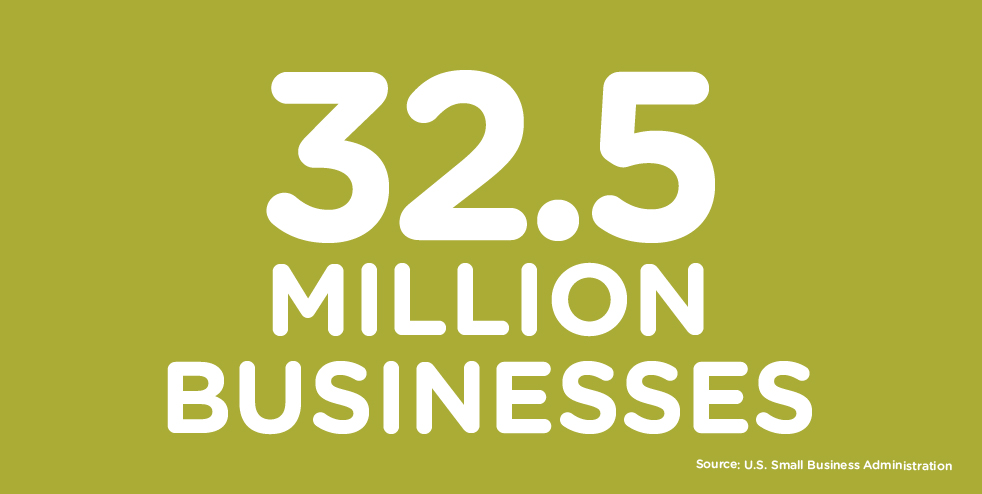
In short, you need a media buying strategy — pronto.
Let’s dig into the whats, whys and benefits, shall we?
Spending Your Media Budget Smartly.
A couple hundred years ago, there was really just one medium: The newspaper. So, anyone could buy space in the local rag for a few pennies.
Not much strategy involved there, right?
But then came magazines. Then billboards. And radio followed by TV and trade magazines. Then the internet and wearable internet. Each of those mediums has hundreds — or hundreds of millions — of advertising placement options.
# TV stations:
1,775+
# Radio stations:
15,000+
# Newspapers:
6,000+
# of US websites:
133 million+
# of magazines:
7,400+
And since the general rule of thumb is that you should spend around 7% of your budget on marketing, you need to be mindful of how — and where — you deploy your resources.
That’s a major reason to have a media buying strategy. But not the only one.
Media Buying Strategy Benefit #1: Achieving Communication Goals
What’s one thing that every company has, but is different for every company?
Goals.
Your company might be a shiny new startup that’s scrounging pennies to get your brand out to the masses (or niche).
Your business could be a century old, searching for more leads (not sales) with millions of dollars to spend.
Yes, everyone has a different goal by which they measure success — but success rarely happens without a solid strategy in place.
Media strategy agencies like Stealth Creative move businesses forward by zooming in on your priorities first, then zoom out to generate a plan for desired results. This is an important distinction.
Why?
Because some media is more conducive to certain goals than others.
Digital is Best Suited For:
Specific targeting Generating real-time data Fine-tuning performance
TV Works For:
Creating effective consumer connections Broad reach Telling stories
Radio is Perfect For:
Efficiency Large audiences Driving online brand searches
Out of Home Enhances:
Broad-reach appeal (billboards on highways)
Niche messaging (individual screens at gyms)
Use Social Media For:
Highly-visual elements
Product demonstrations
Engaging with customers
Print is Ideal For:
Making lasting impressions through physical interaction (holding, turning pages) A more “hands-on” interaction
Your media team will help figure out the right mix based on your goals.
Benefit 2: Data-Driven Delivery
Media planners and strategists are nerds — and they aren’t ashamed to embrace it. Excel is to them what water is to fish. They view data in all its forms as the missing element that makes any strategy really sing.
In fact, media teams make every decision by running the numbers ragged. And a
mathematically-based plan of attack is one of the main reasons why you need a media strategy:
Since media planners put data and analytics under a microscope, they shine at:
Segmenting your audience
Optimizing campaign or spend for constantly improving results
Determining return on ad spend (ROAS) effectiveness
Plotting share of voice, brand recall and other key metrics
Stealth Creative’s media team understands the strengths and weaknesses of each medium and knows which best aligns with the results clients want within their budget.
And our media buyers also understand the nuances between different platforms. For example, different OTT vendors can serve “similar” ad experiences, but they vary on who can be targeted, when and how impressions are delivered and other variables that must be weighed.
Everything is factored to create a plan that has the highest likelihood to achieve — or exceed — the stated goals.
Benefit #3: Right Place, Right Time, Right Message
Pretend for a moment that you sell mattresses and your media team has a strategy to run two different spots: One late at night and one early in the morning.
Why would they do that?
Because the messaging can be different. If a commercial is running at 1 am and an insomniac sees your ad (commercial or banner), the takeaway should be about how your mattress is an instant lights out miracle.
But if someone doesn’t get a deep sleep, the messaging they see or hear on their way to work could be about how they’d feel wide awake if they gave your product a try.
Working with a media planning team not only helps ensure your ideal audience receives your message, they help guide the strategy to help make sure the message makes sense in the context it appears. This 360° thinking is more likely to happen with a full-service marketing agency like Stealth Creative.
Benefit 4: More Bang For Your Bucks
In business, just about everything is negotiable — and that includes media pricing.
As we noted in our marketing myths blog, media buyers can leverage their expertise and connections to negotiate buys at lower rates. Why? Because certain mediums can be like the Costco of marketing; when you buy in bulk, you get better rates. And when you plan media for multiple companies, you are more likely buying multiple time slots, issues, etc.
But there are other ways media buyers can sweeten the deal for you:
Bonus spots
Better placements
Digital elements like banner ads or site takeovers
These are just some examples of what can be negotiated or included in a well-rounded media buy. And your strategist won’t be afraid to play a little hardball to get the best possible deal to achieve your goals.
Benefit 5: Monitoring Your Marketing
Just like any stock market investor will check their 401(K) balance from time to time, it’s natural for companies to want to know how their media investments are doing. Good media planners hold scheduled meetings with clients to discuss performance, tweaks, reconciliations and recommendations pertaining to the strategy.
During these calls, certain data will also likely be discussed:
- Ratings
- Impressions
- Bonus deliveries
- Impact on leads/sales
In certain circumstances — especially digital — you might be able to log in to your own dashboard to see the number of views, clicks and other metrics for a more-or-less real time idea of your campaign’s performance.
Here’s the bottom line: You should expect and trust your media team to make the entirety of your relationship turnkey so you can focus on other things. And they should always be available to communicate the status of your strategy.
Benefit 6: Fresh Ideas, New Opportunities
Media evolves. New competitors and technology come to market. Most importantly, though, opportunities arise.
Just because an annual plan is made at the onset, that doesn’t mean your media team will be sitting on their hands.
Not at all.
Instead, they will (or should) be paying close attention to the national and local landscape in search of the latest and greatest developments, eager to bring these to your attention. Similarly, they should be eyeing consumer sentiment shifts and other measures to proactively modify your strategy and set you up for however you define success.
For example, although the NFL broadcast schedule was set during the summer, ABC and Disney made a deal in mid-September to air an additional eight Monday Night Football games on ABC. Your media team is paid to be on top of these breaking opportunities.
Media Buying Strategies Have Even More Benefits
Indeed, there are literal books on this topic. And while we could make this page infinitely long, you’ve got things to do… like maybe finetuning the strategy for your media buy.
Why not get in touch with the Stealth Creative media specialists? You’ll save time, money and give your business the best shot at achieving its marketing goals.

Brian Reinhardt
Brian Reinhardt is a Senior Copywriter at Stealth Creative whose first unpublished story was penned at the age of eight. Yes, it involved hoverboards, lasers and robots. His days are filled with researching, content creation and SEO strategy. His nights are spent with family, reading and managing too many fantasy sports teams. Nine is his favorite number.
In case you missed the news—you’ve got to adapt or die in this Digital Age. And for brand managers and business owners alike, building a strong online presence is crucial for success.
As we often say at Stealth Creative: Your website IS your brand; it acts as a virtual gateway for customers to discover and engage with your products or services.
So, as long as your website leaves a good first impression, you’re all set. Right?
Turns out, it’s not that simple. Because not all websites are created equal. To ensure your online platform effectively represents your business and reaches your target audience, it’s vital to invest in a website that’s built to best-practice specifications.
Let’s explore the key steps involved in creating a website that not only looks great but serves you exactly how it should.
Step 1: Wireframes and Site Map
The first step for developing your website is building a solid foundation. Wireframes and a site map serve as the blueprint for your website, outlining its structure, navigation and key functionalities. At Stealth, we understand how crucial it is to work closely with clients at this stage to ensure we have clear understanding of YOUR business goals, target audience and desired user experience.
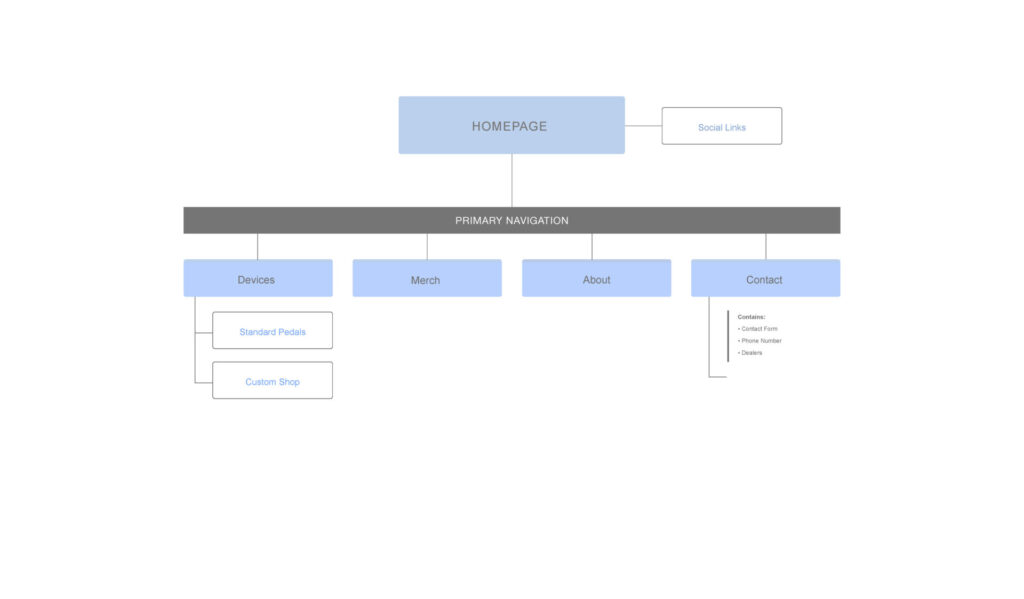
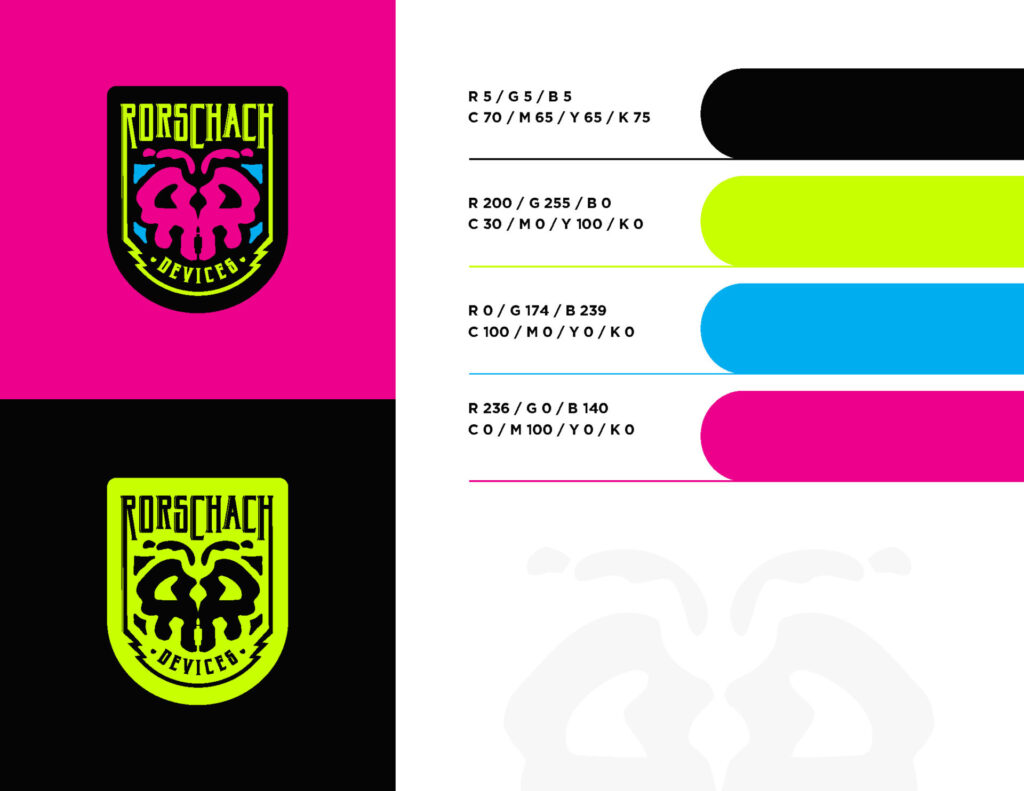
Step 2: Design Phase
Once the wireframes and site map are approved, the design phase begins. Aesthetics play a key role in engaging your website visitors. This is where you get to meet our design team! They love to collaborate with clients, helping to spin their visions into a appealing and cohesive experiences. Logos, color schemes, brand guidelines and any specific design elements that reflect your brand’s personality are developed (or incorporated if already existing). This collaborative process will help create a website design that not only looks stunning but also reinforces your brand’s message and values.
Step 3: Development and Launch Phase
After finalizing the design, the development phase takes center stage. Stealth’s skilled developers will transform the approved design into a functional website, employing best practices for coding, responsiveness and usability. And since more than half of overall web traffic comes from mobile devices, we take a mobile-first approach to design and development. This phase may involve content creation, integration of e-commerce functionalities and customization based on your needs.
Throughout this process, we prioritize regular communication with you, so you can provide timely feedback and we can agilely address you concerns or modifications. Once the website is thoroughly tested and refined, it’s time for the highly anticipated launch.
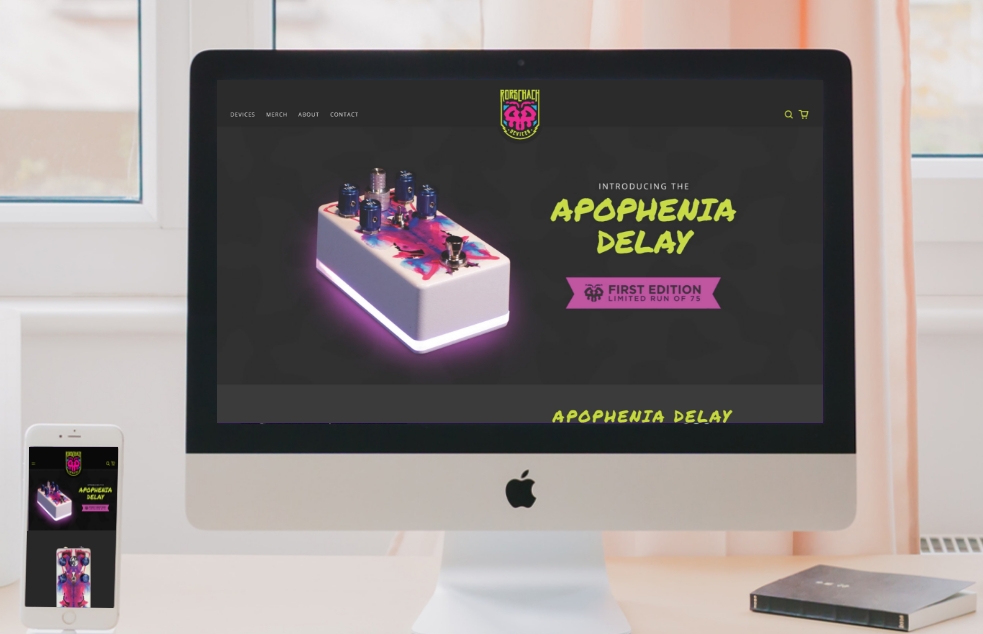
Step 4: Initial Search Marketing Promotion of New Site
Your newly built website is ready to be unveiled to the world, but its success relies on driving traffic and attracting visitors. Incorporating search marketing strategies is the key to improving your website’s visibility in search engine results.
This is where Stealth’s digital marketing experts work to ensure SEO elements, such as keyword optimization, meta tags and proper site structure, are in place. Depending on your business’s needs, our content team can also help to create engaging and shareable content to attract organic traffic and explore paid advertising options to amplify your website’s reach.
You Get Back What You Put In.
Investing in a well-built website is an investment in your business’s success!
By partnering with an experienced agency like Stealth Creative, you can be confident that best-practice specifications are followed, and you can ensure your website is optimized for performance, user experience and search engine visibility.
Check out our Web Services page to get a sense of what we can do. Then, drop us a line when you’re ready to start your website build. We can’t wait to be your guide!

Jack Eschmann
Jack Eschmann is a Senior Copywriter who has worked on both the account service and creative sides of the advertising business. He enjoys crafting messages that are strategically sound, action driving and true-to-brand for each client he serves. He is also a leading member of Stealth’s content team, is an avid musician and production nerd—and can often be found laying down voiceovers in the agency’s production studio.
There are two phrases we hear around this time: “April showers bring May flowers” and “Spring Cleaning.”
No surprise, because according to Statista, 78% of us do some kind of spring cleaning every year. But that doesn’t just have to mean purging your closet or scrubbing baseboards. Today, we’re giving you some tips on how you can spring clean your marketing strategy.
#1 Declutter Your Assets
While there are assets that you should keep handy – logo files, for example – there are plenty that could likely move to an archive. For instance, creative or copy files that have already been produced can be moved to a server or hard drive. This way, you can still access them, but they won’t be taking up precious desktop space. Decluttering gives you a chance to take inventory of what you have in your library – while also allowing for inspiration when it’s time to freshen up those assets!
#2. Ensure You’re on Target
If it’s been a while since you’ve examined your target audience and messaging, now is the perfect time to look “under the hood” of your marketing strategy!
Ask yourself these questions:
- Who is my ideal audience? Why?
- Where can they be found?
- How has my audience grown, changed or shifted in behavior?
- Most importantly, where can they be found?
Because if you aren’t where your target audience is, you need to think about how to get there.
#3 Inventory Your Strengths
While you might keep some marketing in-house, consider if letting a trusted partner help expand your team’s capacity makes sense. Picture this: You no longer expend energy improving your social strategy or media placement. Instead, you get to do what you do best: run your business!
While we can’t help you organize your life, we can help you organize your marketing strategy. If you’re looking for a partner who wants you to succeed as much as you do, we’re here to help.
Kirsten Hackett
Can you believe how many changes the social media world has seen lately?
Neither can we. That makes now as good a time as any to fine-tune your social strategy!
Why?
Because social media means more to the brand-consumer relationship than ever before – and there’s always opportunity to strengthen those customer connections.
Social media users are switching between seven social networking platforms, and they’re spending almost 2.5 hours per day on average glued to their profiles. In a shock that comes to no one, younger generations use this medium more than any other.
Time Spent Using Social Media, per Generation
Can you imagine the possibilities for reaching your ideal audience? We can.
Here’s how to become a social media socialite.
#1 Get comfortable with being uncomfortable.
We get it. Change can be hard. Especially when that change means doing things like getting in front of a camera.
But remember: Your customers want to see you. Don’t sweat being filmed. You’ll be talking about what you know best: Your business. And unless you’re doing a live stream, you can hit “Record” as many times as you need before publishing. (That’s what we do!)
#2. Know where your people are
Does your business need to be on every single social media platform? Maybe a long time ago, but not today. Whether you have an established business or are in the middle of building one, you should know who your ideal consumer is. Once you know that, it’s a matter focusing your efforts on where they spend their time.
Don’t know where that is? We do.
#3 Listen to Your Audience
If you’ve never heard of social media analytics, all you need to know is they help you listen to your audience. Most platforms offer their own analytic tools and insights, but you can also use third-party resources depending on your needs.
The best way to understand what resonates with your audience is knowing what makes them engage. For example, examine a post with a lot of comments. What kind of post is it? A conversation starter? Does it show personality?
Take the attributes of successful posts and recreate them. You don’t want to duplicate the exact same post, but consider how you can adapt the voice, message and imagery into your next social gem.
#4 Stop Their Scroll
You have three seconds to gain the interest of a social media user. That’s right: THREE. If you don’t grab attention off the bat, you’ll likely be ignored.
So how can you make sure this doesn’t happen to you? We’re so glad you asked.
Now that you know who your audience is and where they spend their social media time, put yourself in their shoes. If you were them, what would YOU want to see on your feed? Something eye-catching, right?
Right.
Whether it’s educational or entertaining, your content’s first impression can make or break its performance. A good introductory hook does exactly that – it grabs hold and doesn’t let go. And hopefully, it leads them to your profile to become your newest follower.
Let’s Get Social
Whether you’re a social media whiz looking for some inspiration or are just now starting to dabble, Stealth Creative’s team can help. Remember, it’s never too late to get your social strategy on target.
Source: Sprout Social, Hootsuite, Statista and McKinsey
Kirsten Hackett
David Ogilvy concluded his book Ogilvy On Advertising with 13 predictions.
Many of them were flat out misses (billboards are just as prevalent as ever, direct response is still effective and politicians lean on negative advertising even today).
Because for as creative as he was, he wasn’t Nostradamus reincarnated.
But, seeing as how this is January, we want to give you our 2023 advertising predictions, delivered by Stealth Creative Owner and President, Dan O’Saben.
(And if you prefer reading, keep scrolling.)
Prediction #1: AI Dominates
What a time to be alive.
You can give ChatGPT a prompt to write a blog post. Use Midjourney to create images. And then use Grammarly to edit the post itself.
Impressive, yes. Ethical? While still unresolved, we’re starting to see this issue play out in legal arenas.
Effective? Kind of. After all, AI isn’t creating anything new per se. It just scrapes content and images from the web and rearranges it.
All of this can seem great for a company with a limited budget. But if you ask someone to compare work produced by a person to that made by machine, that someone will probably gravitate towards the authentic, non-AI work.
AI is still pretty nascent. It lacks that quintessential human touch. More importantly, AI hasn’t perfected groundbreaking concepts, even with the best of prompts—yet.
Prediction #2: Mending the Media Divide
Gone are the days when people tuned in at the same time to the same channel. Music playlists are generated by songs you’ve streamed and liked.
We live in a fractured environment, where we all consume media tailored to our tastes, with narrowcasting gaining hold on traditional broadcast.
So while traditional media isn’t going anywhere soon, that’s why we think there will be a bigger investment in OTT/CTV advertising in 2023.
Here’s another reason: There are no elections, which works against the amount companies typically spend on traditional media.
With an influx of budgets ready to be deployed in alternative formats, that means the need to identify and segment audiences with even greater precision becomes critical.
Prediction #3: In It For The Long Haul
There seems to be a misconception that the average person has the attention span of a gnat.
That’s not always true—at least when it comes to content we care about. Who among us hasn’t spent more hours than we’d like to admit watching or listening to a true crime docuseries?
We’ve learned that when it comes to consequential content (like videos on an assisted living facility where a loved one may reside), long form still reigns supreme.
As a result, we see brands leaning into short form reels for teasers or to raise awareness and long form, in-depth content to educate when an important decision needs to be made.
What Are Your Advertising Predictions for 2023?
That’s what we see happening next year. What do you think? Will our prediction be more accurate than Ogilvy’s? Do you have a different take?
We’d love to hear your thoughts. Drop us a comment or reach out to us. We predict we can help you crush your marketing goals.
Dan O'Saben
Have you ever collected a name, address, phone number or email address from your customers? If so, you’ve already gotten the party started. But it’s what you do with this information that counts.
Talking first-party data is now trendier than a Kardashian wearing vintage NASCAR apparel—and it’s becoming more important than ever for companies to recognize its value. This is largely because consumers are getting savvier when it comes to protecting their personal information.
First of all, what is first-party data?
First-party data is personal information that customers willingly provide, such as entering an email address to qualify for 10% off a first purchase. Or submitting their birthdate to get a discount or any other personally identifiable information. And anything you can offer in return to the customer will increase their willingness to share this valuable info.
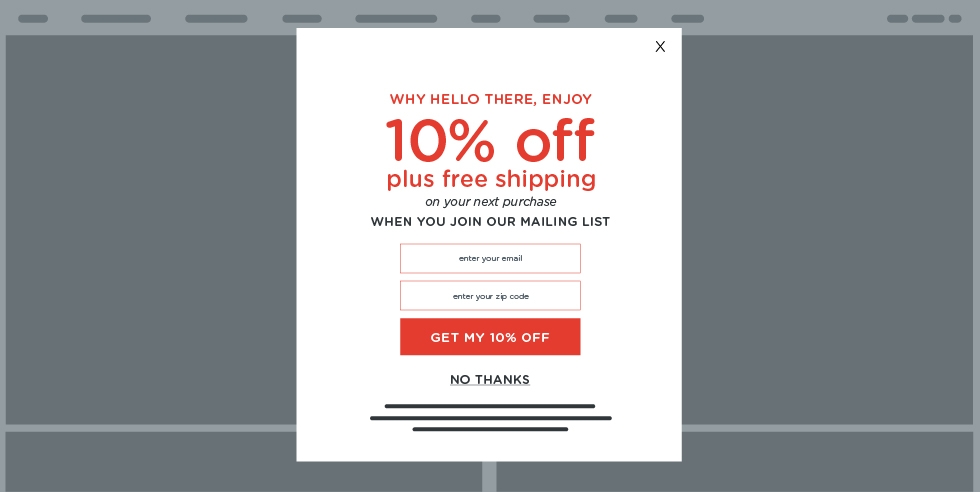
You may have already been collecting this information for years. The question is: how you deploy this information to grow your business?
Not only must a good digital marketer be strategic with targeting, timing and messaging but they must be flexible and adaptable to whatever is going on in the world. And in the background, advertisers are continuing to grapple with the eventual demise of the third-party cookie.
This initially had online advertisers in a panic, since so many depend “crumb trails” that users leave behind when going from website to website for their targeting efforts.
With Google pushing the date of full third-party cookie depreciation back again and again, this news is starting to feel stale. But marketers still need to adapt, both to technical regulations and the increasing savviness of today’s consumer.
Future-proof Your Digital Strategy by Prioritizing First Party Data!
“Be mindful of the shoes your customers are walking in, and how you can help them.”
-Stefanie Grossman, CMO, Prezi
Moving towards this identity-based approach ideally means that advertisers will have a clearer picture of their customers, and customers will have more trust and develop a stronger connection with brands they interact with.
Some benefits of focusing on personal identity in your digital strategy:
- More reliable contact lists
- More accurate customer profiles
- Direct customer feedback
- Customers appreciate transparency throughout their journey.
When you know exactly who you are talking to, there is great opportunity to maximize ad content with dynamic creative, exclusive offers and other touchpoints.
Advertisers should feel inspired by this push to capture attention and give customers what they want, sooner. More intelligent marketing and stronger relationships between companies and consumers will be the result.
But how do I start building/using my database of first-party information?
Our advice is to look for ways to connect with your existing customer base in any way you can and give them something in return for sharing their information with you. Not only will you have better a chance of converting one-timers into repeat customers, but you will be able to constantly hone your target audience profiles. For example, if a customer just bought a new living room couch from you maybe you target them with an offer of a floor lamp or coffee table.
A strong digital partner can help you get the most out of your data.
Wield the Power of First-Party Data with Stealth Creative
Sure, there are still plenty of unknowns when it comes to effectively replacing the third-party cookie. Google, along with many other online marketing platforms, are doing what they can to get ahead of the change by developing tools that use data aggregation rather than individual tracking. (That is a topic for a different day.)
But no matter what is going on in the digital landscape at large, the key to success is ensuring your digital marketing team is paying attention and serving as a true partner—not just a vendor. That way, you can work together to focus on attracting and retaining customers, no matter what the ever-changing digital landscape has in store.
So, if you are ready to:
- Better personalize and integrate your consumer-facing content
- Make your digital advertising more efficient AND more effective
- Have a better relationship with your customers
Contact our expert digital team at Stealth Creative, receive the individualized attention and dedication to understanding your needs that you deserve—and start seeing how the identity-based approach can help you get the results you’re looking for.
Drop us a line today. We cannot wait to help you achieve digital marketing success!
While there are plenty of tools necessary to build a strong brand presence, there’s one that everyone needs: A brand voice. You might not think about it, but every single brand has one. Even yours.
What is a Brand Voice?
You might be thinking: “I’ve got a solid business plan and a great product. Do people really care if I have a well-crafted brand voice?” In response to this question, we couldn’t answer loudly enough: “YES!”
Benefits of Owning Your Brand’s Voice
Personality:
Your audience wants to learn about you. Consumers want to know that they are engaging with real people, not robots. By cultivating a personable brand voice, you are more likely to create an emotional connection with your consumer’s subconscious mind. How does this help you? According to Harvard Business School professor Gerald Zaltman, 95% of decisions related to purchases occur subconsciously.*
Consistency:
If your audience is hearing different voices in email messaging versus social media messaging, they’re going to notice the disconnect. This inconsistency can lead them to look in the wrong place for your product or service.
Another benefit of maintaining consistency is conditioning. Let’s go on a field trip, shall we?
Picture it now: You’re back in high school in General Psychology. Today’s lesson is on Ivan Pavlov’s classical conditioning theory. When it comes to exposing your test subjects–err, audience–to stimuli, it is most effective when it is consistent and recurring. If you don’t have consistency in each consumer touch point, you’re essentially starting the process of conditioning over… and over… and over again.
Retention:
Having a consistent brand voice doesn’t just benefit you externally. When your employees see that you’re not just talking the talk, but walking the walk, they’re more likely to believe in the company’s mission, thus improving loyalty. As we know, internal communication and trust are vital when it comes to building — and strengthening — a brand.
How to Create—AND Maintain—a Brand Voice
The best way to craft a strong brand voice is to go back to square one. What is your company’s mission? What do you hope to achieve—for yourself, your brand and your community?
Once you’ve answered these questions, consider who you want to reach. Who is your target audience? (A bonus to fine-tuning your target audience? Knowing where to find them to ensure that all the hard work that you’re putting into your brand voice is heard!)
After learning who your target audience is, you can then begin to consider their personas. What does your customer want? What are their personality types? Their dreams? Their goals? Even go as far as knowing their favorite sports teams? (Kidding. Kind of.)
When you’ve identified the mission, the audience and the personas, you can then test different voice variations. What resonates with this group? How would they characterize your brand voice? Here are some adjectives that can help get you started: Ambitious. Charismatic. Extroverted. Intuitive. Passionate. Trustworthy. Understanding. Witty.
Let’s Get Vocal
Whether you’ve got a start on some ideas for your brand voice or don’t have the first clue where to start, Stealth Creative’s savvy content strategy team is here to lend a hand.
We can help you define tone, feel and personality and start bringing out the key attributes that will help your audience connect directly to the soul of your brand.
But it all starts with a conversation! Get in touch with us today.
There has been a change in staffing patterns in reaction to the economic recession due to the Covid-19 pandemic, but today’s labor market feels much more complicated than it did during the last recession back in 2008. Then, employers were in the driver’s seat and companies across all industries implemented hiring freezes of historic proportions. In 2008, the economy slowly bounced back, but company management always seemed to have the upper hand and dictated future career moves.
Though record corporate tax breaks were awarded to companies in recent years, employers have not been eager to share those same savings with employees in the form of wage growth. Instead, many large companies used these tax breaks to bolster future capital project investments.
Then came the Covid-19 pandemic, and many workers took on more responsibility as companies cautiously became leaner. According to the Bureau of Labor Statistics (BLS), a record 4.3M Americans quit their jobs in August—an unprecedented level since that data started being tracked in 2000. That’s a 20% increase in voluntary resignations compared to August 2019 and a 40% increase in voluntary resignations from August 2020’s figures.
Job descriptions are changing to balance attracting new employees with remaining efficient as a company. For many prospective employees, title and annual pay are no longer as important as having remote work flexibility, good health benefits, and more vacation days. And the today’s recruiting funnel will continue to become even more automated with numerous recruiting platforms available for small and large businesses.
Companies want to remain top of mind for potential new employee prospects and are using monthly paid search and display campaigns to target ideal candidates online. Employee retention rates are a moving target, and the managers of advertising budgets are hopeful this is a short-term problem. Additionally, with more people open to the idea of working remotely there is more overall competition for jobs than before. A post Covid-19 business environment has fewer in-person geographic constraints which requires more company processes to deliver a consistent customer experience.
One of the best ways for a company to improve employee retention is to change internal perceptions through strategic messaging and well thought out communications to employees. Industry leaders are starting to improve the quality and cadence of their internal communications which also naturally positions employees to be brand ambassadors for future opportunities.
Whether you are a single location or multi-location business, the hiring and onboarding process can look very different by regional office. Standardizing this process through consistent email templates and video is a quick way to improve employee’s perceptions of the company. Video continues to be the preferred medium for boosting internal brand perceptions.
A consistent employee onboarding experience is crucial for the future of remote work. Gone are the days of a new hire settling into a new office environment through 30 days of job shadowing. Most managers want new employees trained and ready to hit the ground running ASAP.
One huge advantage of digital marketing is that real-time data is available to show you how effectively your campaign is engaging your audience. Another advantage is that you can use that data to make informed decisions about ways to increase that engagement, even mid-campaign.
That’s why it’s important to work with a marketing partner who believes in the power of data and has the experience and discipline to read and respond to the story it tells.
At Stealth Creative, we’re devoted to data. We think being able to identify key metrics, dig into the numbers and communicate results in clear language is table stakes. What we do with those results to fine-tune tactics, placement and frequency is the real difference-maker.
To the person with only a hammer, all problems look like nails.
Because our digital clients represent a wide array of industries, we use an assortment of digital tools and platforms to drive the results they desire. Whether it be ecommerce, ticket sales, form fills or email opens, we never lose sight of our goal to deliver a strong return on investment for our clients.
We may design a programmatic digital display campaign to reach a custom audience, create and optimize an ecommerce search campaign, drive form fills, create segmented content for an email campaign and improve a customer’s Google review ratings—all to ensure our clients’ marketing dollars are being spent efficiently.
Here are some examples:
Ecommerce FTW
A recent ecommerce search campaign for one of our national health and beauty clients produced a return on ad spend of 33:1. Not only did we track spend and correlate it with product sales, through access to their ecommerce and Google Analytics, we also were able to identify the users who made purchases from the campaign, which products they purchased, the dollars spent and other identifying characteristics. With this information, the client was able to send personalized messages to folks who made purchases for similar products or routine maintenance.
Reach for the Stars
We all know how important online reviews have become for companies. Some of our clients have asked us to help them develop a strategy to engage with customers so they will leave reviews or contact the company directly if they are not satisfied with the product. By working with one of our clients in the insurance industry, we identified customers who had recent contact with the company and created a personalized email asking them to leave a 5-star review. This approach resulted in a significant increase in the ratings for our clients.
Getting Social
A well-planned and developed social media campaign helped one of our entertainment clients set a record attendance at their event. More than $56,000 in ticket sales resulted from a spend of $3,600.
Making a Stronger Impression
Our media buying, from traditional to digital, is handled in house, resulting in greater efficiency for our clients. We took the Joplin Convention and Visitors Bureau’s digital media buying in house and reduced their cpm by 40 percent, which allowed us to buy an additional 1.2 million impressions. For more details, check out this case study.
News that Just Clicks
Madison Mutual Insurance Company wanted to increase the opens and clicks on their policyholder newsletter. Our solution was to segment the newsletter by geography and policyholder type. The result was an increase of 36 percent in opens and 250 percent increase in clicks. For more details, read the full story.
Want to know more?
Spend some time with our other case studies or drop me an email at ckolsky@stealthcreative.com.
About the Author
Charlie Kolsky is a digital and analytics specialist who’s dedicated to delivering results for our clients. He’s also a pretty mean pickleball player.
Maybe your company has its external, customer-facing communication dialed in to a T.
You’re seeing results. Sales are up.
That’s great! But have you been putting the same effort into your internal messaging?
It’s okay to admit if you haven’t. The customer comes first, right? Right. But…
While maintaining relationships with customers and winning new ones may be your primary objectives, keeping your people engaged and informed should be just as much of a priority. Strong internal communication not only helps maintain the health of your company, it also helps protect the bottom line.
And it’s not as simple as repurposing your existing customer communications or firing off a few company-wide emails. You’ve got to be strategic and consistent from the ground-up.
In other words, you have to be in touch with the intrinsic values of your organization.
Invest in ‘The Employee Experience’
Work environments and employee priorities are evolving at a quicker pace than ever before, so it’s never been more important to make sure your HR and workforce teams are on the same page.
The journey your employees take during their time at your company and the various factors that affect their satisfaction, productivity and longevity—that’s the employee experience.
Benefits, compensation, work-life balance, work environment and company culture all shape this experience, but a good internal communication strategy should be the common thread that unites all of these elements. Because:
-
-
A good employee experience fosters loyalty. You want to retain and grow the employees you have. Not only because turnover inherently costs more, but also because experienced employees can become powerful ambassadors for your brand.
-
A good employee experience means you’ll be attractive to prospective employees. There is a lot of fierce competition for good candidates; you have to put your best foot forward wherever you can.
-
A good employee experience is defined by and maintained through solid internal communication. People work better when they know what’s going on and believe in what they’re doing.
-
If you take nothing else away from this post, at least take this: IT’S NOT A GIVEN THAT YOUR EMPLOYEES ARE FIRM BELIEVERS IN YOUR BRAND.
If the goal of internal marketing is to wind up with fulfilled employees who are nothing short of walking brand ambassadors (it is), they must have a firm grasp on your company, processes and offerings. Effective internal communication gives your team an opportunity to be more active in the company, from onboarding to further training and company education.
Turning Inward
No matter how big or small your business, it’s easy to focus so intently on external or product messaging you’re putting out into the world that you lose sight of what’s going on right under your nose.
And even though it may seem overwhelming, getting your internal game aligned doesn’t have to be a mammoth task. Just remember:
Customer-facing and internal-facing materials should go hand-in-hand. In many cases, we don’t have to reinvent the wheel. Your existing marketing materials are often a good starting place for employee education. This product explainer video we created for Friendship Village employees is a perfect example of creative that’s adaptable for internal and external use.
Internal marketing strategy is just as important as external strategy. Just as you would define goals for your marketing and/or sales teams, you should develop a roadmap for your internal processes at all levels, too. What does success look like? How can your leadership and HR teams help to lift up other departments?
Tactful Tactics
From digital onboarding programs, to training videos, to business accountability tools, there are plenty of ways to maintain the health of your organization on all levels.
Live-action or Animated Video
Display, Search and Geo-targeted Ads
Recruitment Collateral
Branded Digital Onboarding Portals
Professional Development Training
Business Accountability Tools & Partnership
Consider your audience. What methods are going to be the most memorable—even fun—for them to engage with? What processes need to be improved? What are some hurdles management keeps running into?
The right combination of tactics depends on the nature of your company. Whether you’re in need of recruitment help or professional development training depends on your current needs or goals.
Make Sure Your Marketing Is In Sync
The way you talk to your employees can be the difference between success and failure.
Just imagine if your company had the tools to INVIGORATE your current employees, ATTRACT future candidates and BUILD a base of enthusiastic brand ambassadors from the inside out.
That’s precisely why it’s time to consider Stealth Internal Marketing — and we have case studies to prove the benefits for your business.
Though the world continues to change around us, convincing travelers to spend time in our own little slice of it remains a top objective and a driving economic force for many towns, both large and small.
In fact, tourism marketing is a major contributor to the United States economy, accounting for approximately 2.75 trillion U.S. dollars in 2018.
So, who’s in charge of attracting all of those visitors (and dollars)?
At the heart of the local tourism industry are Convention & Visitor Bureaus (CVBs). The CVB is the organization that pulls individuals and groups together to market their community as a whole. Hotels, restaurants, local attractions and event promotion teams all work with their local CVB to attract visitors and locals to their businesses.
Many CVBs get their marketing dollars from state agencies and local hotel taxes. The job of the CVB is make sure there are “heads in beds” at local hotels, motels and bed and breakfasts.
But what if your community doesn’t have a pro sports team, a vibrant food scene or some of the other attractions larger cities might offer?
Small markets must take a unique approach to advertising their communities. More creativity is required in determining what is considered an “attraction,” and more strategy is needed in order to speak to potential visitors in a compelling way. (For example, there is a rising number of travelers looking for experiences that are “off-the-beaten-path,” or of historical significance. This is where a smaller community can shine!)
The Challenges Convention & Visitor Bureaus Face
But even after a town has identified what to say and how to say it, smaller CVBs will continue to face the same key challenges:
- Staffing
It is typical for a smaller community to have a small CVB staff. Many CVBs are staffed by one individual who is responsible for everything from marketing their community, to acting as a step-on guide, to organizing local events to overseeing social media for their community. All of this is in addition to the daily rigor of managing a budget, attending city functions and many other administrative tasks. Therefore, self-promotion efforts are limited or too often pushed to the back burner. - Budget
A smaller community, with no large-scale attractions, is going to have less money to use in marketing their community. They are going to have to work closer with other businesses in the community to make those funds go further and will have to be creative in how they spend their money to receive the best ROI. - Attractions (or lack thereof)
Among the largest challenges for smaller communities is how to answer the question: “But what is there to do here?” And sometimes the struggle isn’t always just from outsiders. If your city doesn’t have an attraction that brings in thousands of people a year, it’s easy for even your locals to think that there is nothing to do.
It all comes down to time, money and resources.
If your staff is being pulled in many different directions, it’s important to bring in someone who can help take responsibilities off their plate. That’s where a marketing agency comes in.
When you hire an agency, you have a full team of people ready to assist with all aspects of your marketing plan. From marketing strategy, to creative design, to media placement, working with an agency increases your staff multifold. You’ve got graphic designers, digital and brand strategists, experts in all types of media placement and account executives to help keep everything on track.
With more than 50 years of combined experience in CVB marketing and media placement, Stealth Creative can help you find the best venues for marketing your community. We have staff that have worked for CVBs and have seen the challenges up close. Based on who your ideal visitor is, we can assist you in determining the best way to reach those individuals. With so many options out there, it’s important to have an expert in your corner, helping to make the most out of the limited budget you might have.
One of the CVBs we currently work with has lost several attractions over the past few years. Their focus has now turned to the local art scene, foodies who travel for the experience of eating unique cuisine, American history buffs, and individuals who want more active vacations – hiking, biking and canoeing are all great options in this area. Stealth has been able to help this CVB determine new target markets and opportunities to promote what makes their city great… and then make sure they are advertising to the travelers that are most likely to visit!
No one can be an expert in everything. But you are an expert on your community. Let Stealth be the experts in marketing your community.
As always stay tuned until the next time we go Off the Radar.
Photo Courtesy of the Joplin Convention & Visitors Bureau.
These days, a lot of emphasis is placed on leveraging digital and social media marketing. And while we agree those two disciplines should be part of every company’s marketing mix, there’s one discipline that tends to get overlooked and left behind in today’s tech-focused world: Direct mail.
You read that right. Direct mail.
It’s not your father’s marketing. In fact, using direct mail in an age when everyone’s focused only on digital, can actually give your company a leg up.
Here are six reasons to consider adding direct mail to your marketing mix:
1) 90% of Millennials think direct mail advertising is reliable.
Millennials typically prefer a low-tech marketing approach, and direct mail fits the bill. In fact:
- 84% of Millennials take time to look through their mail.
- 64% would rather scan for useful info in the mail than email.
- 57% have made purchases based on direct mail offers.
2) Personalization makes a difference.
We like hearing and reading our names. There’s something about it that draws us in, and immediately makes the interaction feel more personal.
The same thing holds true with direct mail. Adding a person’s name and using full color in direct mail can increase response rates by 135%!
3) Use a cross-platform approach for better results.
Each of us learn differently, as we just shared in a recent blog post – some are visual learners, others auditory and still others tactile (or kinesthetic) learners.
Why is this important?
It means it’s crucial for your marketing mix to take that into account – and promote on various channels and different types of media to ‘hit’ your audience where they live, and reach them in the way they learn/absorb information.
One way to do this is to combine direct mail (visual and tactile) with digital ads (could be visual, auditory or tactile), which according to the DMA yields a 28% higher conversion rate.
And, according to Merkle, marketing campaigns that used direct mail and at least one form of digital marketing media experienced a 118% lift in response rate compared to using direct mail alone.
4) 18.4% of former customers respond to direct mail.
Interestingly, direct mail is a great way to reconnect with former clients. It helps you stay top of mind, which means when they have a need for your product or service again, they’ll think of you first.
5) Would you like that supersized?
In this case – unlike for fast food – the answer is: Yes! Oversized envelopes, postcards and letters attract 6.6%, 5.7% and 4.3% of household responses, respectively.
Because they’re a larger size than the standard direct mail dimensions, these pieces stand out among the crowd, er…mail. And standing out is the first step to getting noticed – and to getting your recipient to actually read the direct mail piece.
6) Direct mail impacts product trials and website visits.
Nearly 40% of customers try a product or service for the first time because of direct mail advertising, and more than 60% of direct mail advertising recipients were influenced to visit a promoted website with the heaviest influence being on first-time shoppers.
While direct mail may not be the be-all/end-all, it is a key part of any marketing mix. It prompts action. And it drives conversions.
If you’re ready to talk about how direct mail could help your business with your marketing efforts, reach out today. We’d be thrilled to help you determine the best marketing mix strategy for your business objectives.
As always stay tuned until the next time we go Off the Radar.
Did you know that we all learn a little differently? That’s why it’s important to vary your marketing media to ensure all types of learners (and we’re all learners) can understand and process the message.
While we often hear marketers talk about understanding the demographics and generation of their target audience, discussing the various ways people learn isn’t always top of mind.
But it should be.
After all, if you’re sharing your marketing message, and promoting your company’s products and services in a way that doesn’t connect with your audience, it’ll fall on deaf ears.
The Three Learning Styles
There are three different ways people absorb and process information – and typically, we each have various aspects of the three with one that’s dominant:
1) Auditory - 34% of people are auditory learners, which means they:
- Retain information through hearing, listening and speaking.
- Often prefer to be told how to do things, summarizing the main points out loud to help with memorization.
- Notice different aspects of speaking.
- Often have talents in music, and may concentrate better with soft music playing in the background.
- Enjoy conversations and podcasts.
2) Visual – 29% of people are visual learners, which means they:
- Use visual objects, such as graphs, charts, pictures and seeing information.
- Can read body language well, and have a good perception of aesthetics.
- Are able to memorize and recall information easily.
- Tend to remember things that are written down.
- Learn better by watching.
3) Tactile (kinesthetic) – 37% of people are tactile or kinesthetic learners, which means they:
- Like to use the hands-on approach to learn new material.
- Are generally good in math and science.
- Would rather demonstrate how to do something vs. verbally explaining it.
- Usually prefers group work more than the other learning styles.
- Need to physically manipulate something, such as a pen – or be doing something physical while learning (e.g., standing, walking, chewing gum).
To better understand, you may wish to take this self-test to see which type of learner you are.
Putting This Knowledge to Work for Your Marketing Efforts
Once you’ve identified your business and marketing objectives and have your marketing strategy in place, it’s time to define the tactics that will best help you accomplish those goals.
As you start plotting the plan, keep in mind the three different types of learners, and how the various tactics account for each:
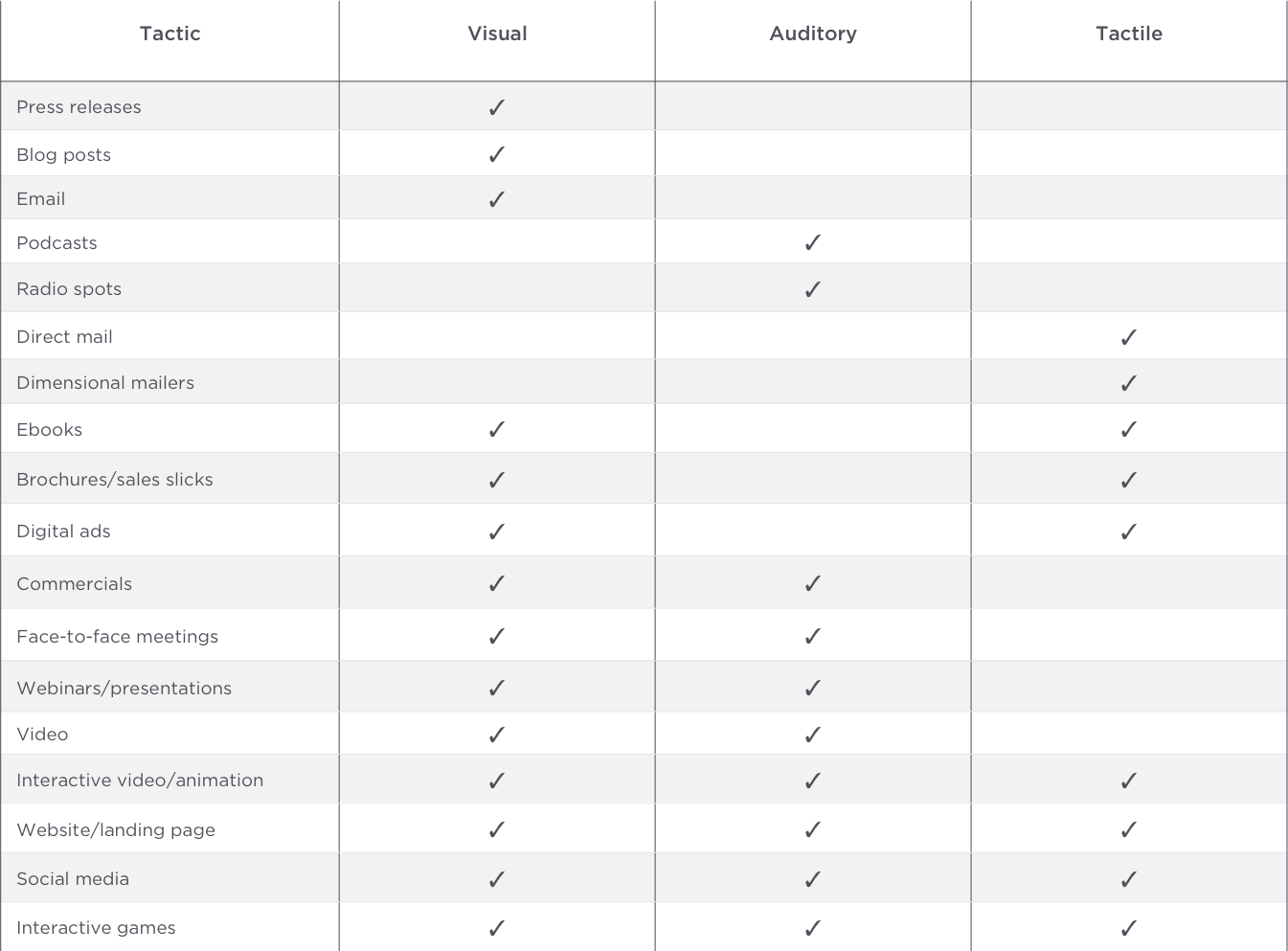
Understanding that your target audience absorbs information in different ways help you better create tactics that will resonate and sink in – ultimately enhancing the outcome and actions taken from the marketing message.
Interested in learning more about how you can enhance your marketing strategy with various tactics that appeal to all types of learners? Reach out today.
As always stay tuned until the next time we go Off the Radar.
That is the question… Ah, meetings – often, a necessary evil. And when handled properly, they can be extremely effective in accomplishing business objectives, moving projects forward and opening lines of communication.
But when handled poorly, they quickly become the bane of our ‘working’ existence.
The Scenario
It’s 9:55 a.m., and a crucial meeting starts in five minutes. You grab your notebook, tablet, laptop or whatever tool you use to take notes, and head off to the meeting room. It’s pitch black. You’re the first to arrive. You sigh, roll your eyes, and head into the room, flipping on the lights and dialing into the screen-share conference call.
And…you wait. And wait. And wait. ⌛️
At 10:10 a.m., people start rolling into the meeting room. Finally, the meeting can begin. But, one of the necessary attendees still hasn’t arrived. Everyone decides to proceed, as it’s already well after the start time of the meeting.
You’re 10 minutes into the agenda (oh wait…do you have an agenda?), and that necessary attendee walks in, interrupting, and asking: What’d I miss?
Not wanting to be rude, the meeting organizer reviews what’s already been discussed, putting the entire meeting behind by yet another five minutes – and wasting the time of those who already had this discussion.
Once caught up, the meeting continues, random things are discussed in no particular order, and the meeting ends with people mostly in agreement on what was shared/talked about. Everyone heads back to their desk to continue with their day.
So…what’s wrong with this scenario? A lot.
How to Run an Effective, Efficient and Fun Meeting
Let’s talk about how to avoid the late-starting, chaotic meeting outlined above with these six steps, which we’ve also worked into an infographic.
1. Decide if a meeting is truly necessary.
We’re so in the habit of scheduling meetings that we often do it by rote. And while it’s great to get together with your fellow coworkers, clients or vendors, it’s not always necessary. Meetings take time away from and interrupt the natural workflow. It’s important to think about whether or not the value from the meeting outweighs that disruption. Things to consider:
Is the meeting more informational than discussion-based?
If it’s the former, consider sending an email to share the necessary information, and provide a way for the recipients to reach out with any questions instead of scheduling a physical meeting.
How many people need to be involved?
You know the phrase: Too many cooks in the kitchen spoil the broth? The same often holds true for meetings. Many times, the meeting organizer feels s/he must include everyone vs. paring it back to the primary decision makers who must be involved. If you want to be inclusionary, send a follow-up email or provide updates on a Slack channel or other IM platform to update the meeting attendees and those who weren’t asked to attend on what was discussed/decided.
2. Have an agenda, state your objectives and assign next steps.
I have a confession to make: When it comes to a meeting, I am not an agenda kind of person. I’m more a: Let’s-get-together-and-chat kind of person. But, I am a let’s-state-our-objectives,-recap-and-assign-next-steps kind of person. But, here’s the thing: Not everyone learns and communicates in the same way, and it’s our job as the meeting host to ensure that those who need an agenda, have one – and that we stick to it as much as possible. Each meeting invite should include the following:
1. Name/purpose of the meeting, preferably in the subject line of the invite.
Example: How to Run an Effective, Efficient & Fun Meeting
2. Description of the meeting’s purpose in the invite copy.
Example: Our objective is to walk through the key steps to ensure all of our meetings run as efficiently and effectively as they can – all while still having fun at work.
3. Attach an agenda.
- Review objectives. Walk through common scenarios/challenges of meetings.
- Review best practices.
- Decide how to modify the current process to ensure effective future meetings
- Recap & open up for discussion/questions.
- Discuss next steps.
- Assign tasks and due dates.
- Determine a follow-up time to touch base.
4. Include a call-in number or screen share when you send the invite.
This is a simple thing to do, and creates less confusion than updating an invite in the future. If there’s even a chance you’ll need it, set it up before you send the invite.
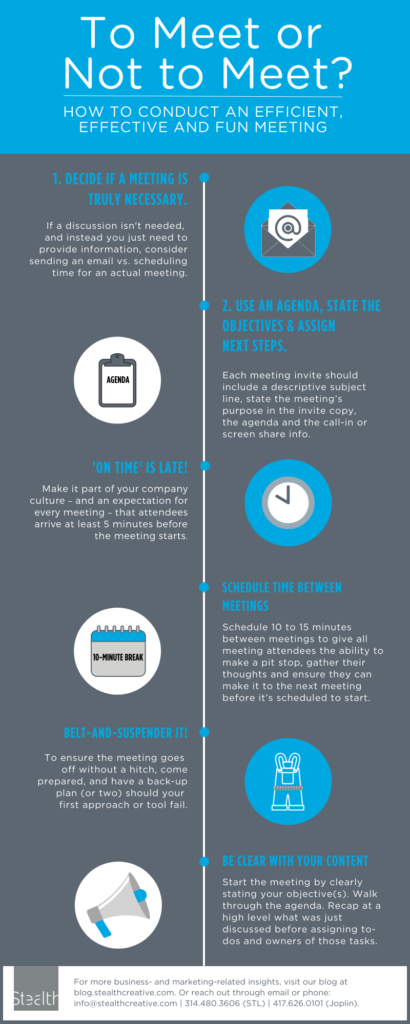
3. Use Lombardi Time.
Vince Lombardi is considered by many to be one of the greatest NFL coaches of all time, named NFL Coach of the Year twice, two-time Super Bowl champion, six-time NFL champion, and inducted into the Green Bay Packers Hall of Fame and the Washington Redskins Ring of Fame.He was famous for his ‘on-time-is-late’ philosophy, expecting his players to be 15 minutes early to games and practices, considering ‘on time’ to be late. While expecting employees to be 15 minutes early to meetings may not always be feasible – or necessary – showing up five minutes early should be doable.Arriving early allows everyone to get their coffee, get settled and have a few minutes for pleasantries before getting the meeting underway. This is essentially crucial if you’re the host. Nothing is ruder than making your clients, vendors or fellow coworkers wait because you’re running late.If you absolutely cannot make it to the meeting on time, let the host know; so they can proceed without wondering if/when you’ll be able to be there. And if you are the host, let the meeting attendees know you’re running late and what time they should join the meeting.I once had a boss who was so adamant about being on time, he’d lock the conference room doors the minute the clock struck 10 a.m. (or whatever time the meeting was supposed to start) and not allow anyone arriving after that time to even enter the room.
Now, that may be a bit extreme, but it definitely drove home the point. And I can tell you that after arriving late once, you never did it again.
Arriving a few minutes before the meeting start time shows consideration to all of the meeting attendees – whether internal or external – and helps the rest of the day stay on time.
4. Schedule time between meetings.
Many times, we’re running from meeting to meeting to meeting. And, sometimes that can’t be prevented. But many times it can.By scheduling 10 to 15 minutes in between meetings, you allow yourself – and the other meeting attendees – the ability to make a pit stop, gather their thoughts and ensure they can make it to the next meeting before it’s scheduled to start.Adding this little bit of breathing room between meetings can create a much calmer and more focused meeting environment.
5. Use the ‘belt-and-suspenders’ approach.
It may seem obvious, but it’s amazing how often the host of the meeting comes to the meeting unprepared. This often means the meeting attendees are forced to just ‘hang out’ while the host finds the files or sets up the technology needed to conduct the meeting, which wastes time for all.One of my mentors taught me the value of “belt-and-suspender-ing it,” as he called it. Essentially, always have a back-up plan (or two) should your first approach or tool fail.For example, let’s say you’re planning to show a PowerPoint presentation to a client. You have it saved to your laptop, and grab your standard projector connector before heading to the meeting at the client’s location.When you arrive, unbeknownst to you, they don’t have the same projector connection you do, and now you’re unable to easily switch to another alternative, instead having to search for a jump drive, save the file to the drive, and use the PC they have in the conference room.Uh-oh…you have a Mac. That means chances are the PC will render the PowerPoint presentation slightly differently, which could impact the overall quality of your presentation.
Had you taken the belt-and-suspenders approach, here’s how that situation would have unfolded. Before heading to the client’s, you would have:
- Saved your PowerPoint presentation as a PDF in case you had to use a different laptop or computer to show the presentation, which wouldn’t render the PPT the same way.
- Saved both the PowerPoint and PDF versions to a jump drive in case something happened to your laptop.
- Ensured you had both the pin and HDMI connectors for whichever type of projector the client may have. Maybe even called ahead to find out which type they had.
- Printed copies of the presentation as a last resort.
Taking these few small steps ensures that regardless of the situation you encounter, you’re prepared for it. Why? Because you not only have your belt, you added suspenders, too.
6. Tell them what you’re going to tell them. Tell them. Then, tell them what you told them.
To run an efficient and effective – and hopefully fun – meeting, follow these steps:
Chit-chat.
It may seem counterintuitive for an efficient meeting, but starting the meeting with a few pleasantries can actually put attendees at ease, and set the stage for a casual, relaxing meeting. Spend no more than 5 minutes on this, and preferably use the 5 minutes before the actual meeting start time to get this out of the way. After all, everyone arrived early, right?
Tell them what you’re going to tell them.
To ensure everyone’s on the same page going into the meeting, it’s important to open with the meeting’s objective: Why are we here? Even though it was originally included in the meeting invite, assume no one read it. Example: The purpose of this meeting is to walk through the key steps to ensure all of our meetings run as efficiently and effectively as they can – all while still having fun at work.
Tell them.
Whether you pull up your agenda from the meeting invite, as a separate Word doc or even have a printed copy for each attendee, share it so those folks who need to check-off items as they go, can do so – and to ensure the meeting stays on track.
Speaking of staying on track, one key component to work into your internal culture to avoid inefficiency and frustration of meeting attendees:
Do not recap for anyone who arrives late.
Make it known that if you arrive late to the meeting, you’ll have to wait until the end recap (tell them what you told them) to get caught up on what you missed. This helps drive the wanted behavior of arriving early or at the very least on time to internal meetings. (This isn’t always feasible for external or client meetings.) As you’re walking through the various agenda items, take time for discussion and questions as applicable to the different topics, ensure everyone has the opportunity to voice their opinion, and don’t be afraid to work in some humor and laughter along the way. After all, laughter has been shown to have a positive effect in the workplace.
“According to research from institutions as serious as Wharton, MIT, and London Business School, every chuckle or guffaw brings with it a host of business benefits. Laughter relieves stress and boredom, boosts engagement and well-being, and spurs not only creativity and collaboration but also analytic precision and productivity. Plus, cracking jokes at work can make people seem more competent.” ~Harvard Business Review: The Benefits of Laughing in the Office
Tell them what you told them.
Once you’ve completed the agenda, and the meeting is coming to a close, recap what was discussed. Don’t assume everyone was laser focused during the meeting. It’s possible to miss something crucial just because your mind wandered for a minute – or because you arrived late. Wrap it up by recapping what was discussed/decided – and confirm you accomplished the meeting objective shared at the start of the meeting.
Determine next steps and assign responsibility.
This is often the most overlooked step in holding a successful meeting. Everyone walks through the agenda, makes a few decisions, and heads back to their desk to continue on with their day. Unfortunately, when you reconvene to see if everything discussed was accomplished (if there were things yet to do), many items may still be left undone because everyone thought someone else was handling it. Instead, decide what the next steps and due dates are, when you’ll reconvene to ensure those items were handled, and which team member will be assigned the task and hold the responsibility for completing it on time.
Tell them what you told them – again.
Depending on the scope of the meeting, it’s often important to follow up after the meeting by sending notes to the attendees, outlining what was discussed and itemizing those to-do items just assigned. This not only puts into writing what was discussed during the meeting (perfect for visual learners vs. auditory learners), but also can inform any team members who were unable to attend what happened during the meeting.
So what do you think? To meet or not to meet?
The next time you conduct a meeting, you’ll be able to put these six steps into place to start holding efficient, effective and fun meetings at your workplace. And you’ll be amazed at how much more you get accomplished in less time, which is a win-win for all attendees – and for your business.
As always stay tuned until the next time we go Off the Radar.
The agriculture sector across the U.S. can be described as anemic at best thanks to the muddled political world that anyone working in Ag is well versed in. China used to be the No. 1 buyer of commercially grown soybeans in the U.S.; however, that has changed during the last couple years with a tariff-riddled trade war occurring between the two countries.
But, that doesn’t mean there isn’t opportunity for effective marketing. Let’s dive into the current environment before taking a peek at how you can put digital, social media and video marketing to use to promote and feature your grain marketers.
A Volatile Political Environment
Put simply, President Trump and his administration promised on the 2016 campaign trail to hold China accountable for their trade practices. Just last week the White House identified China as a “currency manipulator,” which has been argued by economic analysts on both sides of the coin. The reality is that China is not a direct currency manipulator, but they don’t play by the same rules because they have the demand pull on their side.
The U.S. had mastered the supply push of soybeans to China from both the Pacific Northwest and the Gulf of Mexico until the two countries started slapping tariffs on each other. At first, it sounded like just political rhetoric, but to Trump’s credit, he has dug in and continued to escalate tariffs on imports from China to maximize pressure on the communist country.
China has seen their economy slowdown from these tactics among the current administration, but China tends to strategize over the long-term outlook and is most likely waiting to see how the 2020 elections turn out before proceeding one way or the other.
A Bearish Soybean Outlook
U.S. steel mills were printing money due to the new barrier of entry of Chinese metal until March, when things took a turn for the worse. Exports are what suffer (e.g., soybeans). The only hope for life in the soybean market rests on poor growing conditions or the off chance that China comes back to the table and buys U.S. origin soybeans.
The bad news is the Midwest experienced a wet spring where acreage that usually gets planted with corn was oversaturated, and farmers ended up planting soybeans instead. Not to mention there will be an estimated 1.05 billion (yes, with a “b”) bushel surplus across the United States before soybean harvest starts this year in October.
All of the above supply/demand scenarios make it awfully hard to get bullish soybeans for the next couple years. The good news is the Trump administration has pledged and delivered monetary relief for rural farmers who elected him into office in the first place.
In other words, prices are bad, but the government is cutting a check so life can go on as usual for those making a living off of the land. I’m still not seeing shiny new combines being driven off the lot of the John Deere dealership or land being bought up by producers of every size. Today’s environment feels like 1,000-acre farmers are making it ok, but the 5,000-plus-acre farmers are expanding operations slowly. All signs point to another strong soybean crop again this year with timely summer rains keeping prices depressed.
It appears Agriculture will have to remain in wait-and-see mode and battle with the cards they’ve been dealt as they always have. Large commercial exporters like ADM, BUNGE, CARGILL and LDC are not profitable in the current environment as grain divisions keep weighing down the balance sheets.
The overall outlook is that the industry will continue to constrict despite massive corporate tax cuts being awarded to Ag companies; all that did was allocate money to a rainy-day fund for corporations. Those working in Agriculture will continue to be told to do more for the same amount of money, or find a new career.
The Mississippi River and railroads in the northern plains are ready to get back to business as usual, but the whole value chain appears paralyzed, wearing a lot of temporary Band-Aids. During the next five years, the two major threats to Agriculture will be global warming, creating extreme weather patterns for growing conditions, as well as trade relations with China.
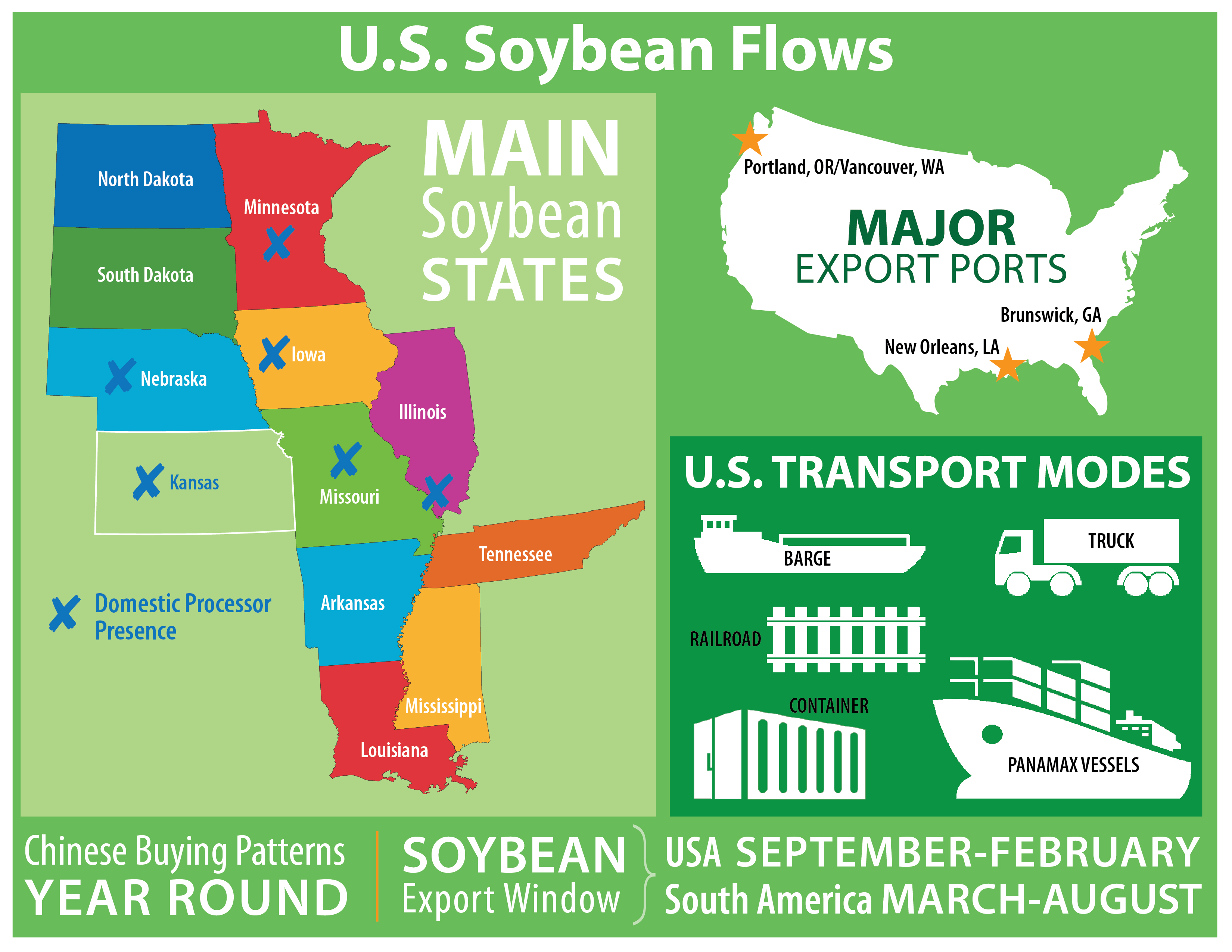
Marketing Your Grain Marketers
Yes, the market is volatile, and recent quarterly earning reports – among publicly traded companies at least – point to more consolidation in the industry. In other words, we should see more company mergers, organizational centralization and cost cutting among major players in the industry.
Keep in mind there is opportunity in that shift.
Farmers will continue to try and eliminate risk amidst the volatility. Grain companies are becoming more vocal with daily market recaps before and after daily trading sessions to establish credibility and provide advice for producers.
Eventually, farmers will sign up record amounts of production towards specialty marketing programs that establish floors and ceilings on yearly prices. Every grain company calls these marketing programs something different. Bunge called it the Alliance Advantage Program; Consolidated Grain and Barge called it their Equalizer family of products. They all take risk off the table.
And all of these major players have invested significant amounts of money training grain marketing specialists on the right marketing plan for each producer. Market factors, farm size, production risk and cash flow can steer a grain marketing specialist towards a specific type of marketing contract each year instead of simply holding town hall meetings every spring and summer across the Midwest to establish credibility.
In fact, the days of the vice president of your grain company spending two weeks holding town hall meetings discussing S&D’s from Fargo, ND, to Lettsworth, LA, are over. Ok, maybe you still have a handful of in-person potlucks with your top customers, but why not work smarter – not harder – by advertising your top marketing specialists?
In a very disciplined manner, you can coordinate a digital and social media marketing plan that drives farmers towards your company and experts. Setting up monthly spend budgets and targeting the right geographic areas stop costs from getting out of control and put less strain on your employees.
Let’s say you have a grain marketing specialist based out of West Memphis, AR, who covers northern Mississippi to Cape Girardeau, IL. Digital and social media marketing requires less in-person attention, and allows you to cover more ground for the same price as paying for monthly travel and entertainment.
If you still had money in the budget, you could supplement digital marketing and social media campaigns with a direct mail campaign that has the same look and feel, and drives the messaging home through multiple media.
You could also create a professional video of each grain marketing specialist that links to a landing page with a form fill to schedule an appointment to learn more.
Interested in learning more about how to put your marketing budget to the best use? Reach out today; we’d love to chat with you more to understand how we can help you do just that.
Did you know that 96% of employees who are happy with their benefits are more likely to be satisfied with their jobs?
So, how do you ensure employees not only know which benefits their employer is offering, but also understand those benefits to make an informed decision about their health and voluntary benefits selection?
As you gear up for your clients’ – or your own employees’ – fourth quarter open enrollment, here’s a few things to keep in mind:
1. Communicate, communicate, communicate.
And then when you think you’ve communicated too much, communicate again! Remember the Rule of Seven: People need to see or hear your message at least seven times before they take action. And this becomes even more important with benefits communications, when education is crucial.
2. Change it up!
When you’re communicating, change up the way you share your message. Don’t assume everyone will see the table tent on the lunch table or the poster in the hallway. Use email, social media, the intranet, instant messaging, desk drops (yes, the old-fashioned paper kind), direct mailers to the home to engage the spouse, group meetings, manager meetings, one-on-one meetings – and more! The sky’s the limit. Just make sure you change up your media.
3.Mind your audience.
Are you talking to a Baby Boomer? A Gen Xer? A Millennial? Or maybe a Gen Zer? Each is going to need different info – and each will react to your messages differently. It’s imperative to vary your messaging within your media to hit each audience.
4. Who ya gonna call?
No, not Ghostbusters! This time, it’s needs to be your company’s benefits expert: Someone in HR, your broker, the president of your company, etc. Determine who can answer employee questions about their benefit package – and do it in a timely manner. Employees need to know they have someone they can turn to with their questions before open enrollment.
5. This way or that?
Think about how employees would be most inclined to participate in open enrollment. With a dedicated benefits expert on hand to help and answer questions? With their spouse at their side to discuss? Think about how you would want to enroll, and what would make the process seamless and smooth for you. Then consider how you can make it just as easy for employees.
6. How'd we do?
Enrollment isn’t finished when the applications are all submitted. Not by a long stretch. It’s time to follow-up with surveys for all! That includes not only the employees who enrolled, but also the HR and benefits staff, managers, marketers, senior leadership and anyone else who was involved in putting the program and process together.
By putting some extra thought into the planning process and marketing efforts, you can pull off the best open enrollment you’ve had to date!
Want to talk more about how best to communicate, promote, educate and market before, during and after open enrollment? Reach out today – we’d love to chat more.
As always stay tuned until the next time we go Off the Radar.
Understanding your target audience – and more importantly, what they’re looking for from your company is an important first step in any marketing efforts you undertake. Often, people think conducting research entails hundreds of thousands of dollars and months of effort. In reality, research doesn’t have to be expensive or time-consuming.
While there’s definitely a time and place for extensive research – and we have several clients who have asked us to do just that – every company can take advantage of custom research. With the combination of improvements in technology and research panels, it doesn’t take a significant investment to perform your research and answer your questions.
Case Study
Let’s take a look at just one example where research made a huge difference:
The Challenge
Several years back we were working with a mid-sized manufacturer that had established a very successful product in the RV industry, and they saw a similar opportunity in the boating and marine industry. After a few years of showing their products at the major shows, they struggled with distribution – even after getting positive reviews for product quality.
The Solution
We created a small, targeted mail survey to provide definitive answers that steered the manufacturer back on track. The target audience was significantly influenced by company brands that had served their industry for years.
Rather than investing in building their brand in a new sector, our client discovered they would fare better by partnering with an established name in the industry and becoming their OEM. By pursuing this strategy, the client achieved a ten-fold increase in revenues – something that wouldn’t have been possible with the targeted, cost-effective research we performed.
While we can’t guarantee that a $3,500 mail survey will yield the same results for every company, we take strides to find not only the best research design for your needs but also the best approach to fit your budget.
Research Offers Insights to Focus Your Efforts
We know how tempting it is to want to dive right into tactics to ‘get things rolling’ once you finally have the time and resources to devote to your marketing. But, doing that without solid research and a data-focused strategy developed first is akin to building a house without a foundation – it may hold for a bit, but eventually it will crumble to the ground.
Whether conducting research with something as simple as a mailed (or emailed) survey, or expanding it to include one-on-one telephone interviews or focus groups, the information gleaned from this foundational work will not only unearth unknown insights, but also reinforce certain assumptions about your target audience and their interests you’d already made – both of which are key in developing your marketing strategy.
Once you have that information in hand, then forming a marketing strategy using that data allows you to craft an approach that will support your business objectives and marketing goals, while driving sales by focusing efforts to resonate with your target audience.
This necessary foundation work then enables you to develop tactics that align with what your target audience wants – whether that be with your traditional marketing efforts, such as email, digital, website development, videos, etc., or when developing a social media marketing strategy and accompanying campaigns and editorial calendars. It all starts with understanding your business – and your target audience.
Ready to dive into research that can make a difference for your company? Stealth Insights, our research team, is ready to chat with you today. Just give us a call at 314.480.3606 or shoot us an email, and we’ll put together a research plan that works with your business objectives and budget.
And as always, stay tuned for more tips from Stealth Creative next time we go Off the Radar.
We’ve all experienced it: Attending – or worse yet, leading – a meeting where the parties are unprepared or under-prepared. It’s a disaster for you, your team – and your customers or clients, as well as a waste of everyone’s time, often resulting in: